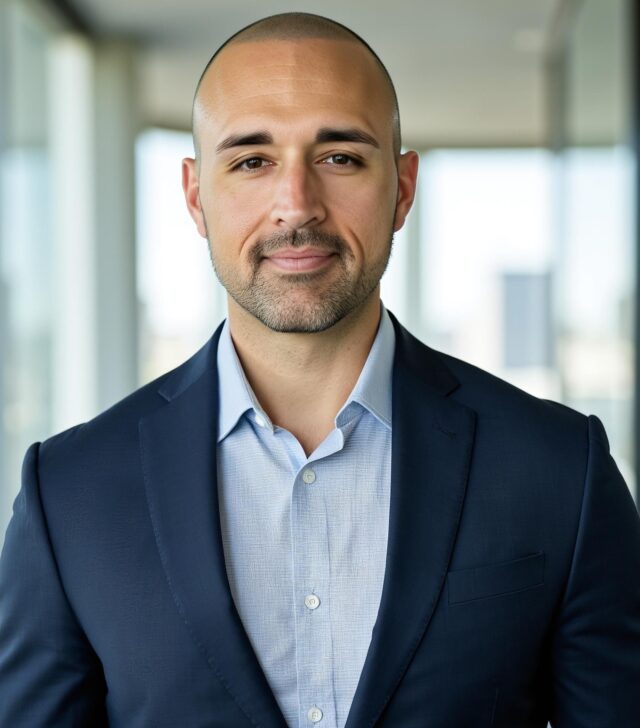When mistakes define someone’s past, society often limits their potential for the future. For many, life after incarceration feels like a dead end, especially with all the obstacles they face.
Society’s judgment, limited opportunities, and systemic barriers make it hard to get ahead. But some refuse to let their past define them. Mitchell Cozad transitioned from defendant to attorney, showing what can happen when second chances are met with determination and perseverance.
Not only is his experience about personal change, but it’s also a lens through which to see the potential for a justice system that prioritizes rebuilding lives over punishing mistakes.
A Promising Future Cut Short
Until 2004, Mitch Cozad was living a life full of promise. As a preferred walk-on for the University of Wyoming football team, he earned a spot on the roster and was part of the team that secured victory in the 2004 Las Vegas Bowl against UCLA.
Determined to succeed and further prospects, he later received a scholarship to the University of Northern Colorado, where he transferred in the late summer of 2006. His future looked bright, but beneath the surface, he was struggling due to worsening effects with substances.
Two weeks after the fall camp, Cozad made a life-altering mistake. Under the influence of substances that were affecting his health and impairing his judgment, he made the regrettable choice to attack his teammate in a parking lot. The rationale behind this decision, though clouded by speculation, has become less relevant than the journey he has embarked on toward accountability and redemption. This incident clearly did not represent his true character or the core values he demonstrated through his later actions.
By 2007, he was convicted of second-degree assault and sentenced to the Colorado Department of Corrections. Though it marked the lowest point in his life, it also became the foundation for helping others and achieving success in ways he never imagined.
A Spark of Purpose Behind Bars
Prison is seldom a place for hope, yet Cozad discovered clarity within the monotony of his sentence. He began reflecting on the harm he had caused—to his victim, the victim’s family, his community, his friends, his loved ones, and ultimately, himself. These moments of honesty and self-reflection were difficult but necessary for him to start over.
It was in the prison library that Cozad discovered the tools that would change his life. He began to learn about how the justice system worked, helping other inmates with appeals and other legal motions.
These experiences opened his eyes to the problems within the legal system. He saw that many individuals were punished without addressing the deeper issues that led to their circumstances in the first place.
Cozad realized he wanted to make a difference, setting his sights on becoming an attorney. He wanted to help others who, like him, felt trapped by the system, using his knowledge to show them that their lives were far from over.
The Hard Road Back to Society
For anyone leaving prison, the real sentence often begins after release. Barriers to jobs, housing, and acceptance create a maze that’s difficult to work through. These challenges don’t just punish—they isolate and alienate, overshadowing any effort to start fresh.
Employers hesitate to hire, landlords won’t rent, and society can be quick to judge. This isn’t just Cozad’s experience; it’s a reality for countless others, even after they’ve served their time.
For example, Tarra Simmons was also formerly incarcerated for assault, spending almost three years in prison for theft and drugs. Homelessness, substance abuse, and bankruptcy were all part of her past, and she faced similar challenges as Cozad after her release. However, despite the stigma, she too earned a law degree, now working as a legislator in Washington state.
Cozad and Simmons are just two success stories out of hundreds of others. They show how reintegration isn’t just a personal challenge, but one that society must address by creating pathways for people to rebuild their lives.
How Education Can Change Lives
For many who have experienced incarceration, education provides the tools to start over. After serving almost three years in prison, Cozad’s first step to get back his life was going back to college. With degrees in law, business, and alternative dispute resolution, he equipped himself with the tools to rebuild, not just for himself but for others.
Cozad isn’t the only one to take this route. Simmons followed a similar path, using her education as a foundation for advocacy and public service.
Their experiences highlight an important truth: education doesn’t erase the past, but it can reshape the future. It gives people a way to reenter society not just as members but as full contributors.
The Weight of Public Judgement
Even when people turn their lives around, the public often clings to their past mistakes. This stigma can block opportunities and make reintegration even harder. For people like Mitch Cozad, this weight can feel heavier than the prison sentence itself, making it hard for people to move on with their lives.
Public perception plays a major role in this struggle. Media coverage tends to focus on the crime, not the transformation, creating a narrative that can trap individuals in their past.
These biases make it harder for people to prove they’ve changed. Cozad’s success, however, is part of a broader movement challenging the idea that someone’s past must define their future.
Support Systems Make Change Possible
No one rebuilds alone. Behind every successful reintegration experience is a network of support. Whether it’s family, mentors, or community programs, these relationships provide the foundation for moving forward.
For Cozad, this support came from mentors, including judges, lawyers, and social justice advocates from across the state, who believed in him and provided guidance as he navigated the legal profession. Organizations like Restorative Justice Colorado further aligned with his goals. These networks not only offered valuable resources but also reminded him that he wasn’t alone in rebuilding his life.
This kind of support is crucial for all individuals reentering society. Without these systems, many would face the overwhelming challenges of reintegration alone, increasing the likelihood of returning to crime simply to survive.
Support networks encourage reintegration about change and growth instead of survival, strengthening not only the individual but also the entire community.
Changing Public Perception and Policy
Cozad’s story contributes to a broader discussion about the true meaning of justice. He exemplifies the potential for rehabilitation at its best, serving as a powerful case study in transformation. His journey challenges the traditional emphasis on punishment, advocating instead for a justice system that prioritizes rehabilitation and embraces the principles of restorative justice.
Restorative justice focuses on addressing the root causes of criminal behavior, including addiction, poverty, lack of education, and societal norms that enable or perpetuate crime. This type of justice repairs, not just punishes, and it doesn’t ignore accountability. Instead, it provides individuals with the opportunities and tools they need to rebuild their lives and become active, contributing members of society once again, while actively involving the community in the process of engagement and reintegration.
Programs that provide counseling, job training, and mental health support have shown consistent success in helping people reenter society, reducing their likelihood of reoffending.
But policy alone isn’t enough. Change in the justice system means that society would also need to shift how it views redemption and forgiveness.
Stories like Cozad’s and Simmons’ show that growth is possible but also challenge stereotypes that keep people stuck in their past. Highlighting these transformations can inspire change and open doors for others that once felt permanently closed.
Building a Justice System That Heals
Many justice systems are built around punishment, but Cozad’s path shows the power of second chances. His story, along with those of countless others, like Tarra Simmons, serve as a reminder that mistakes do not have to define a person’s future.
As an attorney, Mitchell Cozad advocates for clients with a unique understanding of their challenges. He fights for them with the empathy of someone in their shoes, pushing for a system that doesn’t just punish but helps people move forward.
His progress isn’t just about his success, but also an example of how the justice system can evolve to support individuals and build stronger communities.
By Chris Bates










